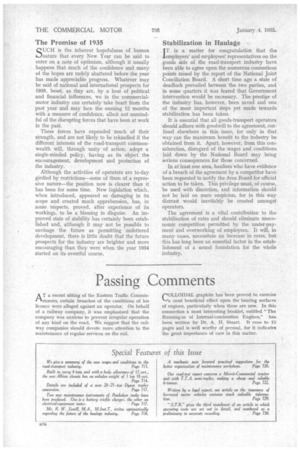Stabilization in Haulage
Page 28

If you've noticed an error in this article please click here to report it so we can fix it.
IT is a matter for congratulation that the employers' and employees' representatives on the goods side of the road-transport industry have been able to agree upon the numerous contentious points raised by the report of the National Joint Conciliation Board. A short time ago a state of deadlock prevailed between the two parties, and in some quarters it was feared that Government intervention would be necessary. The prestige of the industry has, however, been saved and One of the most important steps yet made towards stabilization has been taken.
It is essential that all goods-transport operators should adhere with goodwill to the agreement, outlined elsewhere in this issue, for only in that way can the maximum benefit to the industry be obtained from it. Apart, however, from this consideration, disregard of the wages and conditions laid down by the National Board may bring serious consequences for those concerned.
In at least one area, hauliers who have evidence of a breach of the agreement by a competitor have been requested to notify the Area Board for official action to be taken. This privilege must, of course, be used with discretion, and information should not be laid on mere suspicion, for in this way distrust would inevitably be created amongst operators. The agreement is a vital contribution to the stabilization of rates and should eliminate uneconomic competition permitted by the under-payment and overworking of employees. It will, in many cases, necessitate an increase in rates, but this has long been an essential factor in the establishment of a sound foundation for the whole industry.




















































































